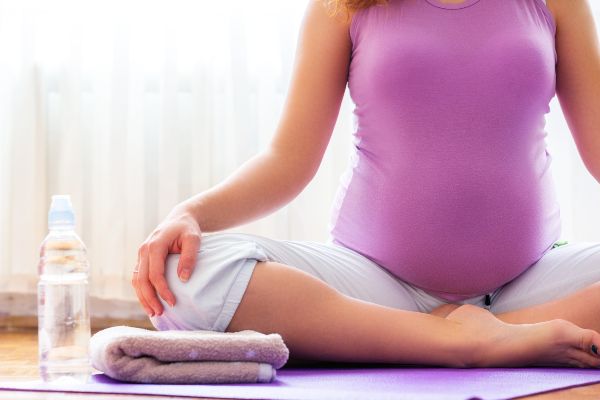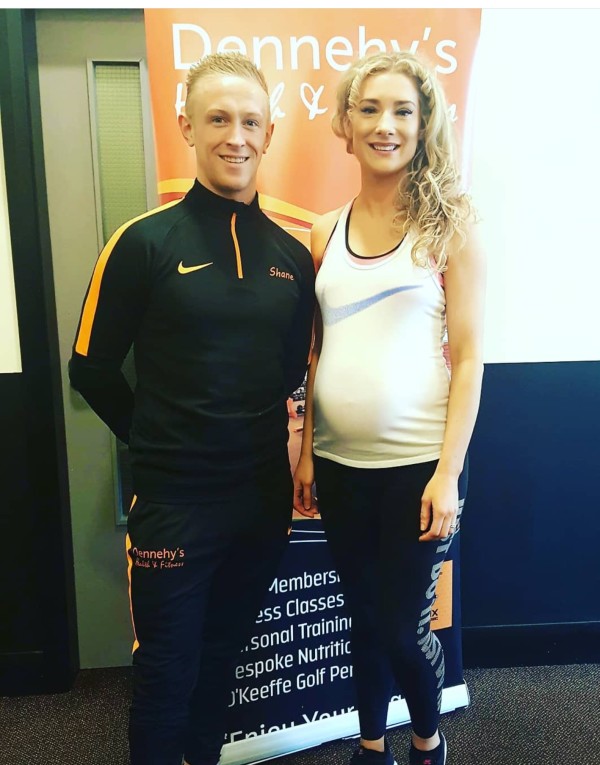Age-old myths surround exercising whilst pregnant, that exercising throughout pregnancy could ‘hurt the baby’ or affect its development in the womb. Scientific research has helped to dispel these myths. A 2011 study carried out by the University of Georgia found that a low to moderate intensity weight training program is safe and beneficial for women with a low-risk pregnancy.
Researchers at University College Dublin and the National Maternity Hospital, Holles Street, found that three-quarters of pregnant women in Ireland fail to keep fit and 12% do not carry out a basic workout or walking, but you can do mild exercise while pregnant and indeed, many choose to.
Professor Fionnuala McAuliffe, who is the Professor of Gynaecology and Obstetrics at University College Dublin and the National Maternity Hospital, Holles Street, was involved in the research and said there are “significant benefits to mild and moderate exercise while pregnant”.
Pregnant celebrities, such as Khloè Kardashian, Serena Williams, Chrissy Teigen and Jessica Alba have all followed pre-natal exercise routines. A celebrity lifestyle offers many advantages, one major advantage being the ability to ‘buy time’. Whilst the celebrity Mum-to-be attends the gym, it is probable that a housekeeper is doing the laundry and a chef is preparing the evening meal. Catherine O’ Sullivan, employs neither a housekeeper nor a chef. Catherine has a four-year-old daughter and works in an administration role for the HSE. She is also signed as a fashion and fitness model with Lockdown Models and Event Management. Keeping fit is a way of life for Catherine. When she found out she was pregnant for a second time, she consulted her GP about exercising during pregnancy. Her GP said “the worst thing for me would be to give up staying fit because my body was so used to it. She said, it was fine to carry on what I am doing, once I listen to my body”. Catherine’s GP advised her that “by going to the gym, labour and delivery will be a lot easier, there’s a lower risk of getting gestational diabetes by exercising and you’ll have more energy later in pregnancy”.
Catherine’s second child is due in May. She works out five days a week. “My routine hasn’t changed, only that I modified my exercises”. Catherine attends spinning classes four days a week and a weights class, once a week. “There are certain things I don’t do in the spinning class, like, the press-ups on the bike. Pre-pregnancy, the class would have been high intensity for me. Now, I don’t do as much. I reduce the intensity of that workout”.
Catherine gave birth to her first child, Niamh, in 2013. She continued to exercise and attend the gym whilst pregnant. “I exercised up to the week before I gave birth. I went to the gym four to five evenings a week. I was able to bounce back a lot easier after the pregnancy”. During her first pregnancy, she had “days where I was tired so I made sure I listened to my body. Some days, I didn’t train”. Catherine returned to exercise five weeks after giving birth to Niamh. “The first thing I did was go walking. I started to build up slowly. I started going back to classes. I took my time, because, your body goes through so much. Within six months, I was back doing my old routine”.
Catherine attends Shane Long’s spinning class at Dennehy’s Health and Fitness in Blackpool. Shane, an experienced personal trainer and has worked with several pregnant women who wish to train safely during their pregnancies. If a pregnant woman has been training pre-pregnancy, Shane says, “you are more than capable of continuing working out throughout your first trimester of pregnancy”. If you haven’t trained before pregnancy, “you can still exercise but make sure you consult your midwife or doctor before committing to anything. If you do get the go ahead, book an assessment with a qualified trainer to plan out your training regime so he or she can tailor it to your needs”.
Shane advises his clients to perform posterior chain exercises. The posterior chain is a group of muscles made up of the lower back, glutes, hamstrings and calves. “Everything is a pull related exercise”, says Shane. “It helps to improve posture throughout pregnancy and helps reduce lower back pain. It’s an advantage to do strength training at a reasonable, steady pace – lightweight, high repetitions”. Shane also recommends pilates, yoga and water aerobics as potential activities to try during pregnancy. He advises women to perform pelvic floor exercises “pelvic work helps with delivery and also improves recovery time, after the birth”, says Shane.
Is there a stage when a pregnant woman should stop training? “Yes and no. It depends on how your pregnancy is going. Some women stop in their second trimester for a number of reasons but, on the other hand, a lot of women could train all the way into their third trimester. It is likely you will slow down naturally and make modifications to some exercises as your body continues to grow. The aim at that stage would be to train gently while still benefiting from it safely”, says Shane.
Apart from maintaining her fitness levels, Catherine explained the other benefits of exercising during her pregnancies. “There are so many benefits. It reduces stress, increases your mood, increases your energy, helps you sleep better, helps reduce back pain and swelling. Regular exercise is one of the most effective ways to improve your mental health. They were major factors for me”.
Shane’s top tips for exercising during pregnancy:
1. Make exercise a hobby, not a chore. “Enjoy it”.
2. Exercise regularly. “At least three times a week, if possible”.
3. Listen to your body. “Never work yourself to exhaustion. Taking long rest periods during workouts will reduce fatigue during a session”.
4. Drink plenty of water during your workouts. “Stay hydrated to avoid your body from over-heating. Avoid saunas and steam rooms after workouts”.
5. Avoid certain exercises. “Avoid abdominal exercises and high-intensity exercises. Avoid jumping exercises in the second trimester. Avoid heavy lifting. Keep weights light with high repetitions.”
6. Eat well “Make sure you are not making drastic changes to your diet, like reducing or cutting out foods”.
7. Log your progress. “Try to log what you’re doing exercise and food wise, to keep your midwife and doctor updated throughout your pregnancy”.
8. Seek advice “Consult your midwife or doctor. Meet with a trainer to get the right programme”.












